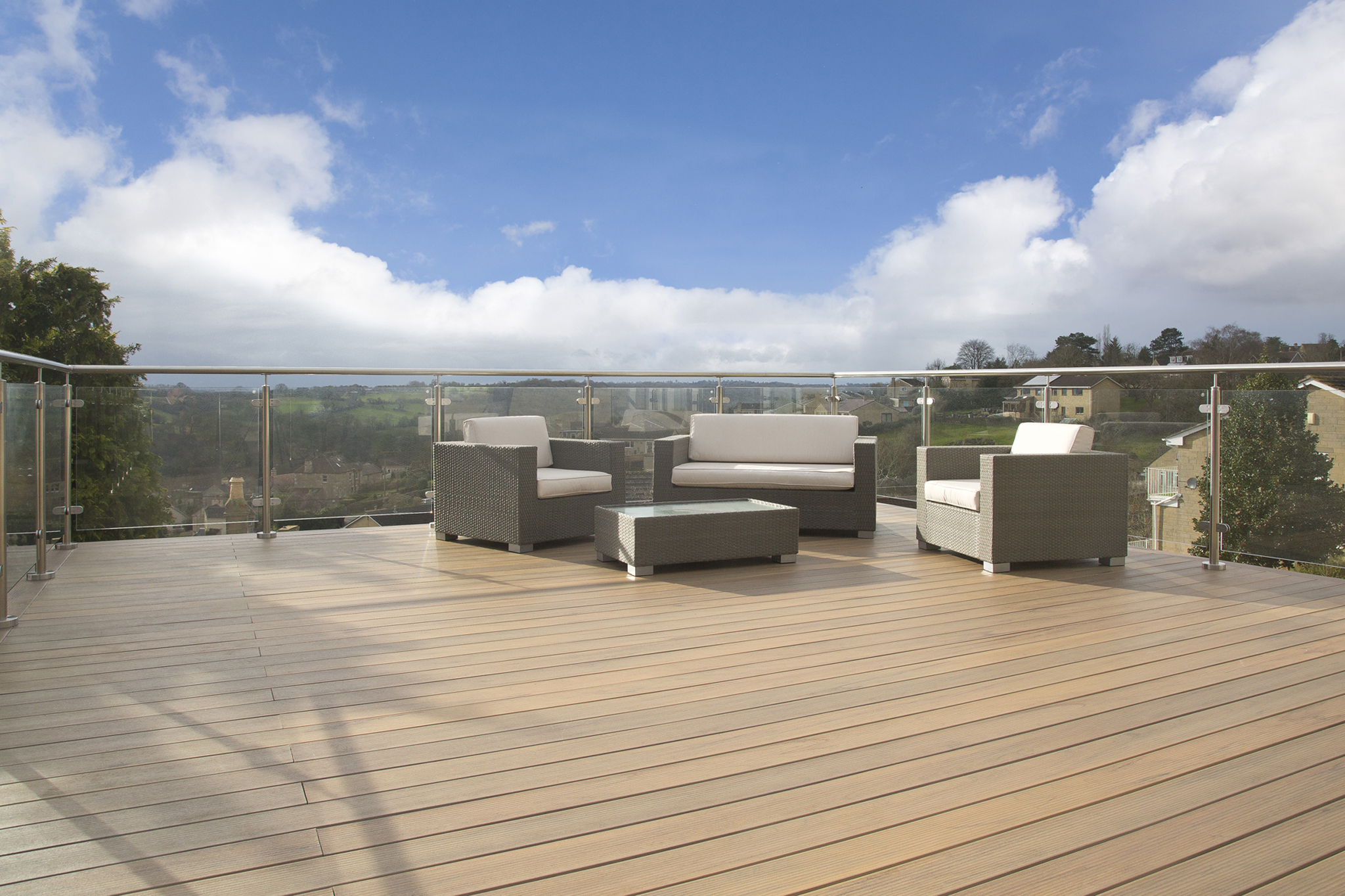For those who wish to create decked garden areas to improve their homes there is a variety of decking materials from which to make a choice. Wood is the most traditional of these materials and decking boards are available in a variety of different timbers including hardwoods such as Teak, Ipe and Iroko. Softwood from coniferous trees is also used to manufacture decking boards and both come in a variety of finishes. More contemporary decking board materials are UPVC (plastic) and composite decking. Again these are available in a variety of styles and colours. But given the large amount of choices available, what is the best type of decking board to choose?
Simply because it is going to spend its life exposed to the elements, garden decking needs to be robust as well as easy to build with and maintain. Any choice of board needs to offer the best value for money as well as the most attractive finish and of course durability.
Timber decking, whether made of soft or hard wood, is a traditional natural material and will be familiar to everyone. Timber decking boards are treated with varying degrees of preservatives and finishes that are designed to prolong the life of the wood; however whether it is stained, varnished or painted, timber decking is going to need regular maintenance to ensure that it remains protected from damage from weather, fungus, mould and insect infestation. Whilst timber decking often comes with guarantees of protection from decay, it will nonetheless require regular checking and maintenance to keep it at its best.
UPVC deck boards are made of high impact thermoplastic and as therefore entirely artificial in nature. As they are composed of plastic, UPVC deck boards are easy to maintain and keep clean. They are available in a variety of colours and wood-grain effects and are usually non-slip. Because they are plastic they will have an artificial appearance.
Composite decking boards are made of re-cycled wood and plastic polymers bound together to give a hard timber-like material that is less prone to damage from weather, water, mould, rot and insect infestation. Composite decking is also far more resistant to scratches and stains than timber. It is available in a variety of styles and colours that have the appearance of timber but none of the drawbacks. Composite decking is available in two kinds and these are called capped and uncapped. Capped composite decking is covered with a coating that makes it even more durable and resistant to damage than its non-capped relative. Composite decking can be worked in exactly the same way that timber can, using the same traditional tools. It is also cheaper to buy than traditional timber decking.
Given its durability, timber-like appearance and value for money, capped composite decking is clearly the best choice for any decking project.
